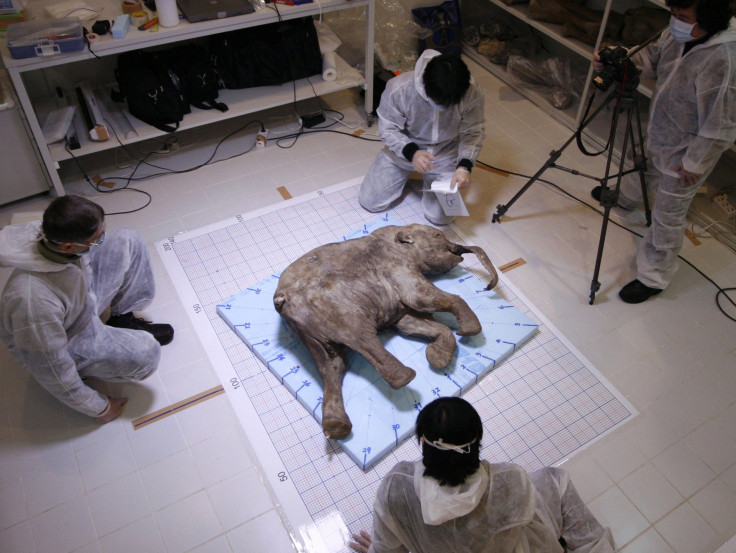Is Cloning Possible For Extinct Animals? Mammoth Lab Created By Russia, South Korea Scientists

The mighty mammoth, which walked the earth for hundreds of thousands of years before dying out during the ice age, may do so again. In a joint effort, scientists from Russia and South Korea hope to clone mammoths at a lab devoted to the venture, according to the Moscow Times.
Established in March in Russia's northern republic of Sakha, the lab is headed by researchers from Russia's North-Eastern Federal University and South Korea's Sooam Biotech Research Foundation. They will focus on the tissue and the genomes of the mammoths.
“We plan to study not just the cells of the ancient animals, but also their DNA,” said Semyon Grigoryev, director of the Mammoth Museum, in an interview with the weekly magazine Ogonyok.
Researchers believe the environment in Russia would be conducive to the mammoths -- should the project be successful. “It's cold enough, so why not,” Grigoryev said.
Mammoths existed for more than 350,000 years before the species became extinct toward the end of the last ice age, about 4,500 years ago. The large species, which thrived in cold environments, is believed to be related to modern-day elephants.
The Sakha facility has the world's largest collection of frozen ancient animal carcasses and remains, with more than 2,000 samples in its possession, including some that are tens of thousands years old, such as a mammoth discovered on the island of Maly Lyakhovsky; experts believe it may be more than 28,000 years old.
Many of the remains were discovered in the permafrost zones near the facility, where cold temperatures have kept carcasses well preserved. However, Russian bureaucratic issues sometimes stall the procedure to identify fossils, so the partnership with South Korea aims to accelerate the process.
“Sometimes it's impossible to process samples in Russia, so we have to ship them to our colleagues abroad. To do that, you have to do enormous amounts of paperwork and deal with a lot of government institutions,” Grigoryev said. “We were only able to transport the mammoth [to South Korean scientists] half a year after preparing it for transportation. During that time it was just lying there, rotting."
While no extinct species have been cloned, scientists have had success cloning mice, goats, pigs and cows.
© Copyright IBTimes 2025. All rights reserved.






















